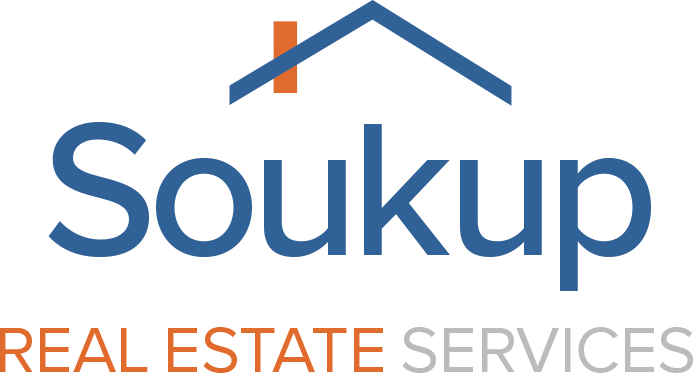What should be (unless you are ultra-wealthy) the goals of real estate investing? Cash flow! How do you know if a property is going to have positive cash flow? It is a mixture of an art and a science. Unless a property is currently rented and the owner can provide operating statements, the rental value is just an estimation. Here is where the art comes into play. Estimating the market rents for the subject property.
Online Tools
Zillow, Trulia, Craigslist, and Rentrange.com are just some of the online tools at your disposal where you can conduct your own research. Square footage, location, bedrooms, bathrooms, and age of home will be the biggest factors in determining your rental amount. Collect data for these types of homes in the area and try to get to a price per square foot and price per bedroom rental amount. Once you have these two numbers, you can play with them when estimating your investment properties rental potential.
Real Estate Agents
If you are working with a real estate agent to purchase an investment property, hopefully a knowledgeable one, they should be able to confirm or help determine a potential rental amount. At minimum, he or she should have resources to help provide you ESTIMATES of potential rents. ***Reminder – real estate agents are in the business of selling homes, so take their estimated rents lightly. ***Bad Real Estate Agent Story: I once had an agent call and ask me if I would be willing to send them information to confirm that the rental rates on a subject property were $1,500/month. I believed the maximum rental rates on this property were closer to $1,200/month. When I told the real estate agent this, they still asked if I would be willing to confirm that $1,500/month was attainable. As you can probably guess, the reason the agent needed the rents to be $1,500/month and not $1,200/month was to make the numbers work and the agent able to close the deal. This may come as a shock to you but this happens more often than you would think. I suggest you don’t just take your real estate agents’ advice, but seek multiple sources. I did NOT send the agent their request.
Property Managers
Calling a property manager to verify some of your calculations for rents can be a great use of your time. Property managers are fully versed in investment properties and rental rates in the area. They deal with them all day long. They research the market, send surveys, secret shop, and determine the rental rates for the area.You should ask property managers if they are having to give “concessions”. Concessions are “give aways” or enticements to potential renters in exchange for them signing a lease. It could be a month or two worth of free rent.
A moving expense allowance, or other types of “concessions”. When the market is strong, few if any concessions are given. But if the market is weak, you could be giving away concessions in hopes to lure renters to your property. Property managers will be very in touch with the rental market. You should spend the time building a relationship with one or two.
You never know, if you buy enough rentals, it may make sense one day to turn the management over to them. Determining your rent, with the goal of being as accurate as possible, is a fine art. Market conditions can vary in different areas and at different times of the year. This MUST be taken into consideration when determining rents. A property that rents for $1,800 in the summer may have to decrease to $1,650 in the winter in order to get rented. While it may not sound like a lot, that $150 decrease dramatically impacts your properties financial viability. It is important to have a rough, but good idea of what a property can rent for. Knowing the potential rent is paramount for you to be both successful and have positive cash flow on a rental property.
The 10BII Calculator – Finding Your Offer PriceEnter my inner math geek. Backing into the TOP price you can pay for a property. You’ve decided to finance the deal – 30-year fixed or adjustable rate mortgage and you have the estimated interest rate. The 10BII allows you to take investing into your own hands.
At any time, with estimated rental amounts, your loan type in years and interest rate, you can back into your purchase price. Here’s how: Estimated rental rate: $1800/Month*Expense Ratio: 30% = $540Net Cash Flow without Debt Service = $1,260Loan Terms: 30-year fixed loan at 4.75% with 25% down*Expense Ratio – Expense ratios are estimated ratios to calculate the operating expenses of any given property. They take into consideration management fees, utilities, trash expense, attorney fees, leasing fees, maintenance, property taxes, insurance, and other miscellaneous expenses. This expense ratio can estimate what it will cost you on a monthly basis to operate a property. I’ve seen some investors use a 50% rule however, you’ll never buy a property if that is the case. Or you’ll buy a D-class property at such a discount that they practically give it to you. I don’t buy D-Class properties. –. So, for practicality, let’s keep expense ratios between 25-45% (NOT INCLUDING DEBT SERVICE). 25% will be your newer properties that do not require as much maintenance due to its age. 45% is the opposite, maybe a fair amount older and a poorly ran property that will take some additional maintenance up front to get it back up to operational speed. For our example, we will use a 30% expense ratio.
Let the 10BII do its magic! Plugging in $1,260 as your monthly payment, 4.75% in as your interest rate and having changed your number of payments to 360 (as you pay your mortgage monthly not annually and over 30 years you’ll make 360 payments), your “N” is 360. Press the magic Present Value Button and voila, you have $241,542. There is your max LOAN amount you can afford and cash flow $0 on this property. This calculation takes into consideration the amortizing loan over 30 years and the present value of money. Let the financial calculator do the math and you just know the theory behind it.
Double-checking and triple-checking your numbers is very important. Backing it out one last step dividing $241,542 by 75% you get your max PURCHASE PRICE of $322,056.66. You divide by 75% because your loan is based on you putting 25% down on the purchase price and 25% of $322,056.66 is $80,514.16, giving you a loan amount of $241,542. YES, THAT EASY! You can now estimate with almost certainty what you can buy the property for and still assume that you are going to be able to afford the debt service, operate the property and have a positive cash flow. Getting the property for anything less than $322,056 will now allow you to have a higher cash flow. OR, if you are able to rent the property out for $1,900 instead of $1,800, then again, you are now cash flowing more than originally thought. Going the opposite direction is just as possible. Hopefully, putting in the expense ratios and having done your due diligence on the estimated rental amounts will limit this exposure. If you take the time to learn the market, research rental rates, be conservative, and run ample calculations, you should be able to have a positive cash-flow investment property.

